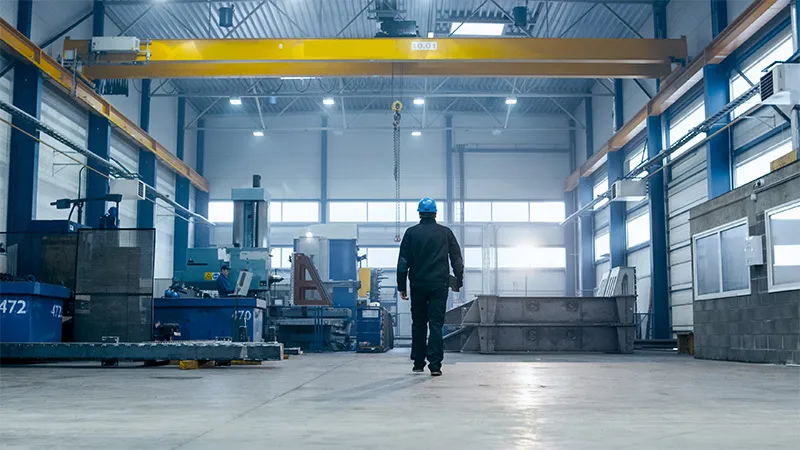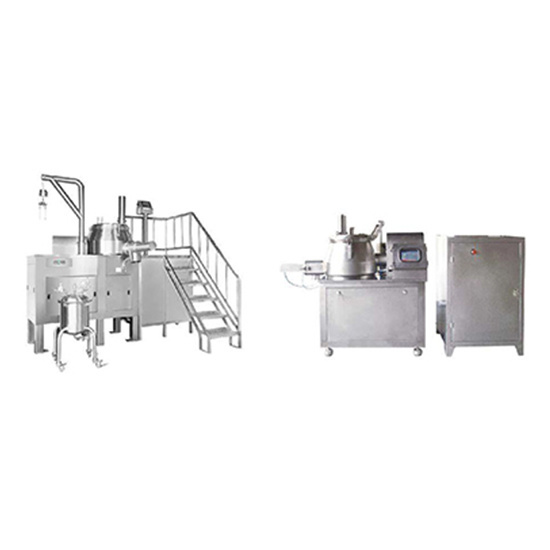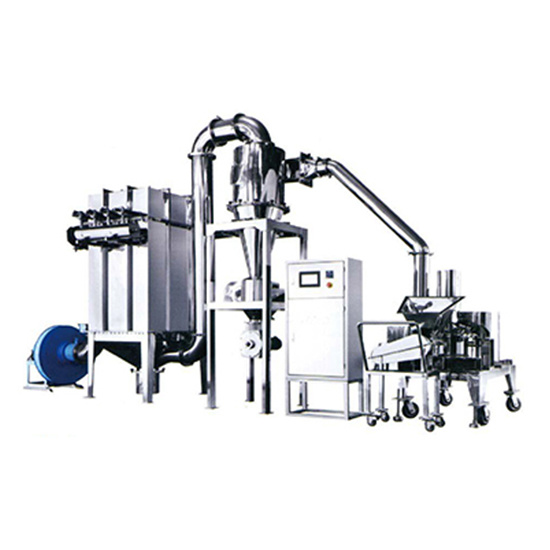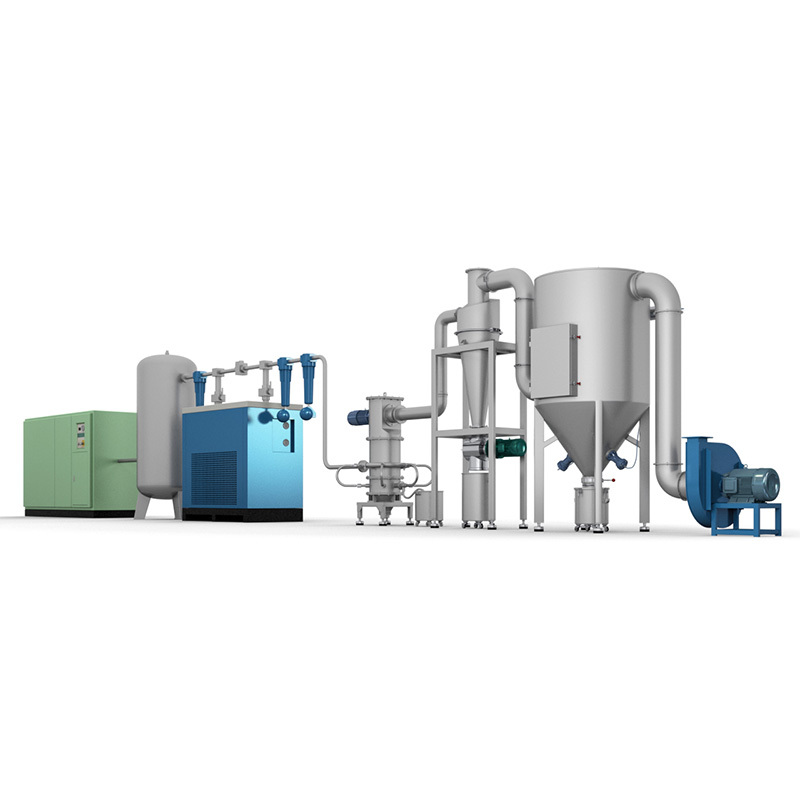NEWS
The Science Behind Airflow Pulverizing Machines: Understanding Their Mechanism
Jul 18,2025
The Science Behind Airflow Pulverizing Machines: Understanding Their Mechanism
Airflow pulverizing machines have become an essential component of modern manufacturing processes. These machines utilize advanced technology to effectively reduce materials to finer particles, making them crucial in various industries, including pharmaceuticals, food processing, and materials engineering. In this article, we will explore the underlying science of airflow pulverizing machines, their mechanisms, advantages, and applications, ensuring a thorough understanding of these vital machines.
Table of Contents
1. Introduction to Airflow Pulverizing Machines
2. The Operational Principles of Airflow Pulverizers
3. Key Components of Airflow Pulverizing Machines
3.1. Airflow Mechanism
3.2. Grinding Chamber
3.3. Classification System
4. Advantages of Airflow Pulverizing Technology
5. Applications of Airflow Pulverizers in Various Industries
6. Maintenance and Optimization of Airflow Pulverizing Machines
7. Frequently Asked Questions (FAQs)
8. Conclusion
1. Introduction to Airflow Pulverizing Machines
Airflow pulverizing machines, often referred to as air-swept pulverizers, harness the power of air to grind materials into fine powders. They operate on the principle of fluid dynamics, employing high-velocity air streams to facilitate particle reduction. This technology is particularly advantageous for materials that are heat-sensitive, as it minimizes thermal degradation during the pulverizing process.
As industries seek more efficient processing methods, the demand for innovative machinery such as airflow pulverizers continues to grow. By understanding the mechanisms at play, manufacturers can optimize their operations and enhance product quality.
2. The Operational Principles of Airflow Pulverizers
The operation of an airflow pulverizing machine can be broken down into several essential phases:
1. **Material Feeding**: Raw materials are fed into the machine through a feeder. This can be done either continuously or batch-wise, depending on the machine design.
2. **Air Injection**: High-velocity air is injected into the grinding chamber, creating a swirling motion that facilitates the impact and shear forces necessary for material pulverization.
3. **Particle Reduction**: As materials enter the grinding chamber, they collide with each other and with the grinding elements within the chamber. This collision leads to the breakdown of materials into finer particles.
4. **Classification**: After grinding, the air stream carries the particles through a classification system, which separates fine particles from coarser ones. Only particles that meet the specified size are allowed to exit the machine, while larger particles are recirculated for further grinding.
5. **Discharge**: The finely pulverized material is collected at the machine’s discharge point, ready for further processing or packaging.
By understanding these operational principles, manufacturers can leverage airflow pulverizers to achieve optimal results in their production lines.
3. Key Components of Airflow Pulverizing Machines
To grasp the functionality of airflow pulverizing machines, it's essential to explore their key components:
3.1. Airflow Mechanism
The airflow mechanism is fundamental to the operation of pulverizers. It is responsible for transporting materials through the grinding chamber and ensuring efficient particle reduction. The air velocity and flow rate are critical parameters that need to be optimized based on the material characteristics and desired particle size.
3.2. Grinding Chamber
The grinding chamber houses the grinding elements, such as hammers or blades, which are responsible for the mechanical breakdown of materials. The design of the chamber is crucial, as it influences the air dynamics, particle trajectory, and overall efficiency of the pulverizing process.
3.3. Classification System
The classification system, typically employing a cyclone or a sieve mechanism, plays a pivotal role in segregating particles based on size. This ensures that only adequately pulverized materials proceed to the next stage, while coarser particles are redirected for additional grinding.
4. Advantages of Airflow Pulverizing Technology
Airflow pulverizing machines offer several significant advantages:
1. **Minimal Heat Generation**: The air-cooling system reduces the risk of thermal damage to heat-sensitive materials, preserving their quality and integrity.
2. **High Efficiency**: The combination of air pressure and mechanical impact allows for rapid and thorough particle reduction, increasing production rates.
3. **Versatility**: These machines can process a wide range of materials, from brittle substances to tougher composites, making them suitable for diverse applications.
4. **Controlled Particle Size**: The classification system enables precise control over the final particle size, ensuring that products meet specific industry standards.
5. **Reduced Contamination**: The closed-loop system minimizes the risk of contamination during processing, enhancing product purity.
5. Applications of Airflow Pulverizers in Various Industries
Airflow pulverizing machines are employed across numerous sectors due to their versatility:
- **Pharmaceuticals**: These machines are used to produce fine powders of active pharmaceutical ingredients (APIs) while maintaining their chemical properties.
- **Food Processing**: Airflow pulverizers are ideal for grinding spices, herbs, and other food ingredients, ensuring consistent particle sizes for uniform flavor distribution.
- **Chemical Industry**: They are utilized for processing polymers, pigments, and additives, facilitating the production of high-quality chemical products.
- **Minerals and Metals**: Airflow pulverizers help in the milling of minerals and metals, creating fine powders essential for further processing and manufacturing.
By recognizing the broad applications of airflow pulverizers, manufacturers can explore new opportunities and enhance their product offerings.
6. Maintenance and Optimization of Airflow Pulverizing Machines
To ensure the longevity and efficiency of airflow pulverizing machines, regular maintenance is crucial. Key maintenance practices include:
1. **Routine Inspections**: Regularly check the grinding chamber, air intake, and classification systems for wear and tear.
2. **Cleaning**: Clear any buildup of material to prevent clogs and maintain airflow efficiency.
3. **Calibration**: Periodically calibrate the machine settings to ensure optimal performance based on material properties.
4. **Lubrication**: Keep moving components properly lubricated to reduce friction and wear.
5. **Monitoring**: Implement monitoring systems to track performance metrics, allowing for timely adjustments and improvements.
By adhering to these maintenance practices, manufacturers can optimize the performance of their airflow pulverizing machines and achieve superior processing results.
7. Frequently Asked Questions (FAQs)
What materials can be processed using airflow pulverizing machines?
Airflow pulverizing machines can process a variety of materials, including but not limited to pharmaceuticals, food products, chemicals, and minerals.
How does airflow affect the pulverizing process?
Airflow plays a critical role in both the transportation and reduction of materials. Proper airflow ensures efficient particle size reduction and minimizes heat generation.
What is the typical particle size range achievable with airflow pulverizers?
Airflow pulverizers can achieve particle sizes ranging from a few microns to several hundred microns, depending on the material and machine settings.
Are airflow pulverizing machines energy-efficient?
Yes, these machines are designed to maximize energy efficiency by utilizing air currents effectively, reducing the overall energy consumption during the grinding process.
What factors influence the choice of an airflow pulverizing machine?
Key factors include the type of material being processed, the desired particle size, production capacity, and specific industry requirements.
8. Conclusion
The science behind airflow pulverizing machines highlights the intricate balance between air dynamics and mechanical impact in achieving fine particle reduction. By understanding their operational principles, key components, and advantages, manufacturers can optimize their processing capabilities and enhance product quality. With a wide range of applications across various industries, airflow pulverizers are set to play a pivotal role in the future of manufacturing. Embracing this technology can lead to increased efficiency, reduced production costs, and improved product outcomes, marking a significant step forward in material processing excellence.
More News










